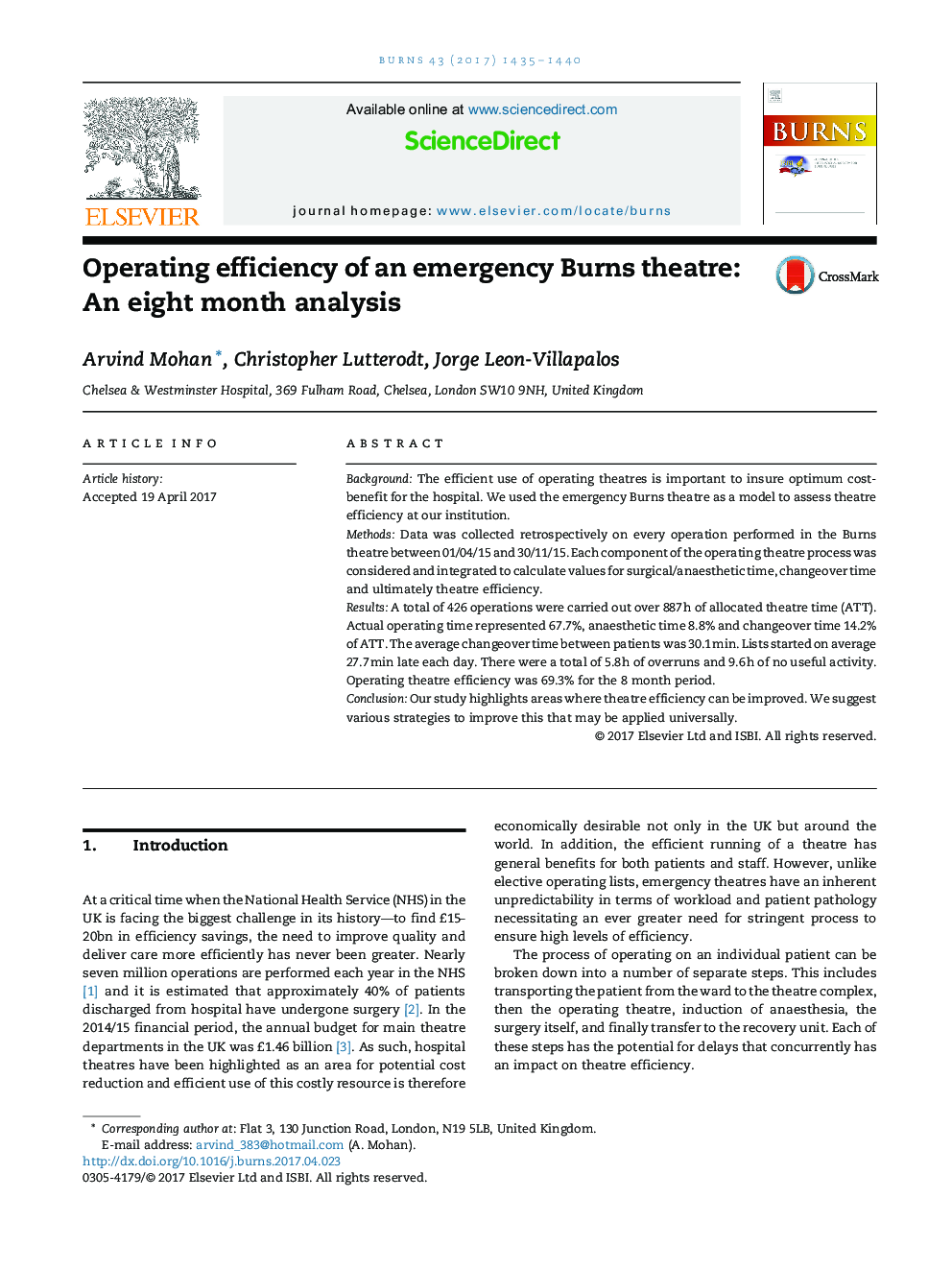| Article ID | Journal | Published Year | Pages | File Type |
|---|---|---|---|---|
| 5635945 | Burns | 2017 | 6 Pages |
â¢The efficient use of operating theatres is important to ensure optimum cost-benefit for the hospital.â¢The process of operating on an individual patient has multiple steps which have the potential to lead to a reduction in theatre efficiency.â¢We suggest a number of techniques by which these delays can be minimised thus increasing theatre efficiency and reducing cost.
BackgroundThe efficient use of operating theatres is important to insure optimum cost-benefit for the hospital. We used the emergency Burns theatre as a model to assess theatre efficiency at our institution.MethodsData was collected retrospectively on every operation performed in the Burns theatre between 01/04/15 and 30/11/15. Each component of the operating theatre process was considered and integrated to calculate values for surgical/anaesthetic time, changeover time and ultimately theatre efficiency.ResultsA total of 426 operations were carried out over 887Â h of allocated theatre time (ATT). Actual operating time represented 67.7%, anaesthetic time 8.8% and changeover time 14.2% of ATT. The average changeover time between patients was 30.1Â min. Lists started on average 27.7Â min late each day. There were a total of 5.8Â h of overruns and 9.6Â h of no useful activity. Operating theatre efficiency was 69.3% for the 8 month period.ConclusionOur study highlights areas where theatre efficiency can be improved. We suggest various strategies to improve this that may be applied universally.
